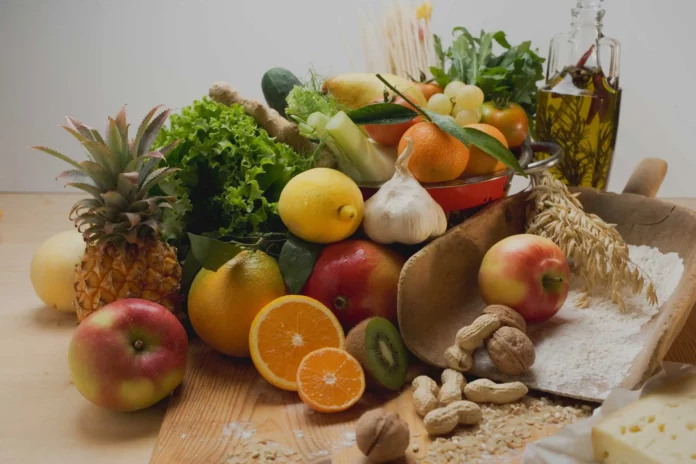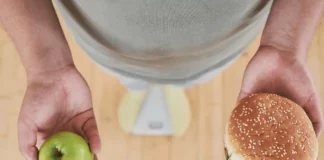Fruits and vegetables are extremely important for all in the overall maintenance of our health. The issue is that just like everything else, prices for these essentials are currently through the roof!
Imagine this scenario: you are an elderly person living alone, your sole support is yourself and you are barely surviving on a fixed income. Thinking about going food shopping stresses you out because you’re prioritizing your nutritional needs for the month and have to decide whether to purchase fruits or vegetables. Why? Because purchasing both may not be possible, plus the fact that produce can spoil so quickly, and you feel it might be a waste of money if you don’t consume all the veggies and fruits you purchased before they go bad. What to do?
Let’s examine some tips on how to store fruits and veggies so that they last longer than a week.
Fruits
Nutritiousness for our bodies is what fruits provide. They are nature’s gift to humankind. The juicy crunch of a ripe, red apple is so satisfying that it moves you to immediately take another bite. But sadly, the lifespan of fruit is seasonal and often short, too short.
How about some tips on how to keep certain fruits fresh longer, sometimes even a month longer. Shall we?
- Apples:
Nobody likes a mushy honey crisp apple.
Apples shouldn’t be stored on the countertop because they will lose their freshness in five to seven days. Room temperature will only speed the rotting process up.
Do not store apples near lemons or limes. Apples release a chemical called ethylene that will make these fruits near it over-ripen.
Refrigerate your apples in the crisper bin of your refrigerator where they will last almost ten times as long than if left on a countertop.
Give your apples room to breathe. Do not place them too close together when storing.
- Bananas:
Do not store your bananas right next to other fruit as this can speed up their ripening.
Using a small amount of pressure when breaking the banana from its stem can help keep the rest in the bunch fresh.
Do wrap the stems in plastic but not the whole banana. Extra points if each stem is wrapped individually.
Hang your bananas from a hook or a banana tree and place it away from heat.
- Grapes:
The advice for keeping grapes fresh longer is conflicting. One side says you should wash and pat dry your grapes. When dry, put them in a container that has vents. If you don’t have one handy, return the grapes to the bag they came in, and put in the rear of your crisper drawer.
The other side suggests that you do not wash the grapes as long as they are still on their stem and simply store them in your crisper. Wash as you eat them and pull any from the stem that are decaying to keep the others from rotting.
You be the judge!
- Oranges:
Do not keep oranges in direct sunlight. This will cause them to over-ripen and shrivel. If purchased in a plastic bag, move to a mesh bag and store in your crisper drawer.
- Avocados (Yes! They are fruits!):
A brown avocado does not mean it is spoiled. This happens because of oxidation, but the fruit is still safe to eat. Slice off the brown part and before eating.
When shopping for avocados, make sure the one you pick is ripe or close to it. To test, press on it firmly. If your avocado submits to pressure but doesn’t sink or if it has a bumpy skin, it is ready to eat. If your avocado’s skin is green or dark green with black spots or is too smooth, it is not yet ripe.
If you’ve mistakenly purchased an avocado that isn’t quite ripe yet, store it at room temperature until it is, then place it in the refrigerator. This will keep it ripe longer.
Or, cut a lemon in half. Squeeze the juice over your avocado flesh and place it in a Ziploc bag. Squeeze as much air out as possible before closing the bag.
Vegetables
Some people, particularly children, despise vegetables. But they are so nourishing, and the crunch factor is oh so satisfying. For our vegetable loving readers, we have some tips for you as well on how to keep your vegetables fresher longer. But, before we get started, did you know that there are five types of vegetables with differing ways of storage? Yes, there are!
Let’s go through them!
- Dark Green Vegetables: Among these are broccoli, bok choy, collard greens, kale, spinach, mustard greens, and romaine lettuce to name a few. To keep these vegetables fresh longer, wash then lay on paper towels to dry. Once dry, roll them up into a cylinder and store in an airtight Ziploc bag or airtight container.
- Red and Orange Vegetables: These include any type of squash, pumpkins, carrots, bell peppers, jalapeno peppers, tomatoes and sweet potatoes. These can simply be stored in a plastic bag in your crisper. Storing them this way will keep them fresh for up to two weeks.
- Beans: Fresh pinto, red, chickpeas, kidney, soy, and cannellini are some of today’s most popular beans. Store these in the crisper drawer, unwashed until ready to use. Remember, we’re not talking about canned beans here!
- Peas: There are three main types of peas: snow peas, snap peas and shelling peas.
Did you know that you can keep fresh peas for up to a year if frozen? After washing, lay them out on a paper towel to dry. Once dry, place in a vented storage container or in a Ziploc bag you’ve punched holes in.
Note: Snap peas will lose their crunchiness when thawed.
- Lentils: Of the four categories of lentils, green, red/yellow, specialty and brown, brown lentils are the most commonly purchased.
Dried lentils can be stored in a container that is airtight and placed in your cupboard for up to a year. Cooked lentils should be covered and can be stored in the refrigerator for up to seven days. If frozen, they will keep for six months if frozen as long as they are in a Ziploc bag that you’ve squeezed the air out of or, in an air-tight container to avoid freezer burn.
As we end this post, let’s raise a carrot stick as we make a commitment to eat more vegetables by putting some of these tips to use and stay healthy!


